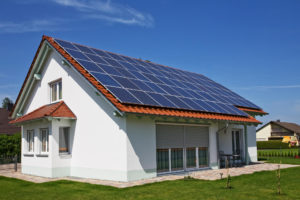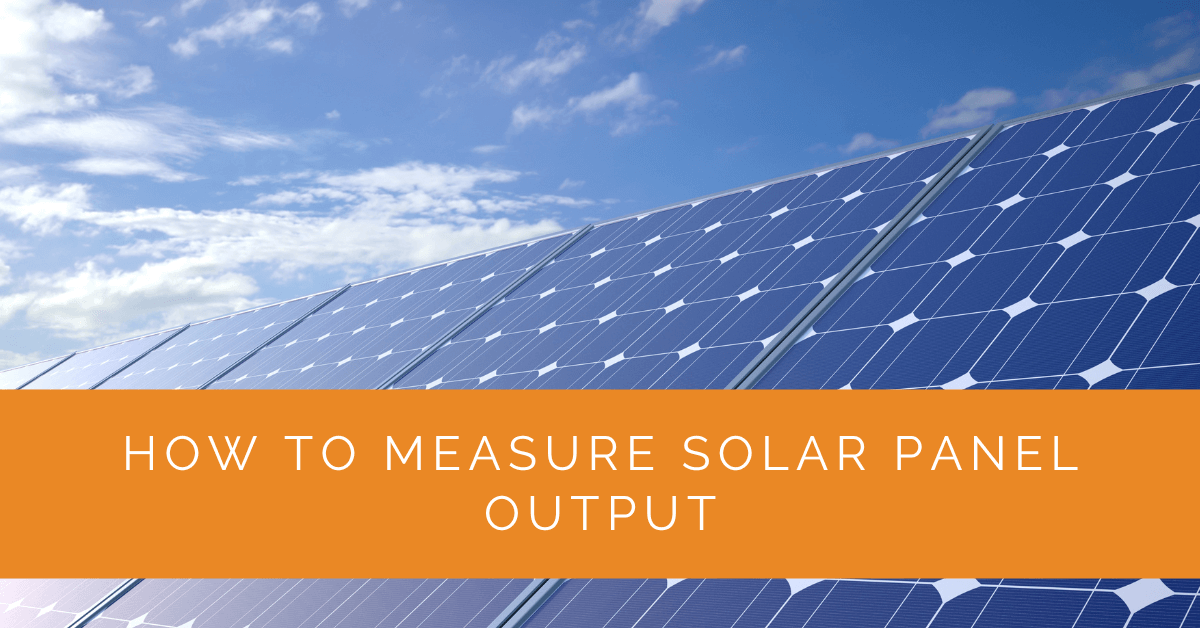Solar panels are a vital component of any solar energy system, and measuring their output is crucial for assessing performance and efficiency. This comprehensive guide will explore the various tools, methods, and calculations for measuring solar panel output. By understanding these techniques, you can optimize your solar panel system for maximum power generation and effectively monitor its performance.
Contents
- 1 Key Takeaway
- 2 Why Measure Solar Panel Output
- 3 Tools for Measuring Solar Panel Output
- 4 Methods for Measuring Solar Panel Output
- 5 Interpreting and Utilizing the Output Data
- 6 Case Study: Enhancing Solar Panel Performance Through Regular Output Measurement
- 7 Expert Insights From Our Solar Panel Installers About How to Measure Solar Panel Output
- 8 Experience Solar Excellence with Us!
- 9 Conclusion
Key Takeaway
- Measuring solar panel output is crucial for assessing performance, optimizing energy production, and ensuring a solid return on investment for your solar energy system.
- Tools like solar inverters, monitoring systems, energy meters, and multimeters are essential for accurately measuring solar panel output.
- Interpreting and utilizing output data helps assess efficiency, identify anomalies, forecast energy production, and implement optimization strategies for your solar panel system.
Why Measure Solar Panel Output
Measuring the output of your solar panels is essential for several reasons. By understanding the importance of measuring solar panel output, you can effectively assess system performance, optimize energy production, and ensure a solid return on investment. Let’s explore in greater detail the significance of measuring solar panel output:
Performance Assessment
Monitoring and evaluating the performance of your solar panels is crucial to ensure they are operating at their peak efficiency. Regularly measuring the solar panel output can identify any underperforming panels, shading issues, or malfunctions. This allows you to take timely corrective actions, such as cleaning dirty panels or repairing faulty components, to maximize energy production.
Return on Investment (ROI)
Measuring solar panel output directly impacts the financial returns of your solar investment. By tracking the energy produced by your panels, you can calculate the savings on your electricity bills and determine the payback period for your solar system. Accurate measurement helps you assess the financial viability of your solar panel installation and make informed decisions regarding your energy investment.
System Efficiency Evaluation
Measuring solar panel output is fundamental to evaluating the efficiency of your solar system. Efficiency refers to how effectively your panels convert sunlight into usable electricity. By comparing the actual output of your solar panels with their maximum power rating, you can calculate the system’s efficiency. This analysis helps you identify any factors affecting performance, such as dust accumulation, shading, or aging components. Addressing these issues can optimize your system’s efficiency and overall energy production.
Energy Production Monitoring
Measuring solar panel output allows you to monitor the energy production of your solar system over time. You gain insights into seasonal variations, weather patterns, and system performance trends by tracking daily, monthly, and annual energy production. This information is invaluable for understanding your solar panels’ overall energy generation capacity and evaluating their long-term reliability.
Environmental Impact
Measuring solar panel output is important for financial and performance reasons and assessing the environmental benefits of solar energy. By accurately measuring energy production, you can quantify the amount of carbon emissions avoided and your solar system’s positive environmental impact. This data helps reinforce the environmental sustainability of your solar investment and contributes to a cleaner, greener future.
Maintenance and Troubleshooting
Measuring solar panel output plays a vital role in the maintenance and troubleshooting of your solar system. By regularly monitoring output data, you can identify any anomalies, such as sudden drops in energy production or irregular patterns. This helps you diagnose potential issues early on and take appropriate steps to rectify them. Proactive maintenance ensures your solar panels’ longevity and optimal performance, maximizing their lifespan and minimizing downtime.

Tools for Measuring Solar Panel Output
Measuring solar panel output requires using specific tools designed to provide accurate data on energy production. These tools enable you to monitor the performance of your solar panels effectively. Let’s explore in greater detail the tools commonly used for measuring solar panel output:
Solar Inverters
Solar inverters are a critical component of solar panel systems and a primary tool for measuring output. They convert the direct current (DC) electricity generated by the solar panels into alternating current (AC) electricity for use in your home or to be fed back into the grid. Modern solar inverters have built-in monitoring functionalities, providing real-time data on energy production, power output, voltage, and current. By accessing this information, you can monitor and analyze the performance of your solar panels.
Solar Monitoring Systems
Dedicated solar monitoring systems offer comprehensive capabilities for measuring and tracking solar panel output. These systems consist of sensors, data loggers, and online monitoring platforms. Sensors are installed at various points within the solar panel system to measure energy production, voltage, and current. The data loggers collect and store this information, while the online monitoring platforms provide real-time access to the data. These platforms offer many features, such as detailed energy production analytics, performance alerts, historical data tracking, and remote system monitoring. By utilizing solar monitoring systems, you can gain in-depth insights into the output of your solar panels and assess their performance over time.
Energy Meters
Energy meters are crucial in measuring solar panel output and overall energy consumption. Bi-directional or net meters are commonly used in solar panel systems. These meters record both the electricity produced by your solar panels and the electricity consumed by the grid. By measuring the net energy production, you can determine the exact output of your solar panels. Energy meters provide data on kilowatt-hours (kWh) produced, allowing you to monitor energy generation and accurately track your system’s performance.
Multimeters
Multimeters are versatile electrical measurement devices that can measure solar panel output. A multimeter can measure DC voltage, current, and resistance with the appropriate settings. By setting the multimeter to the appropriate DC voltage range, you can measure the output voltage of your solar panels. Similarly, setting it to the DC range allows you to measure the current flowing through the panels. Multimeters are valuable tools for basic measurements and can help you assess the health and performance of your solar panels.
It is important to note that some solar panel systems, such as microinverters or power optimizers, may already have built-in monitoring capabilities. These devices provide panel-level monitoring, allowing you to measure and analyze the output of individual panels in real-time. Some solar panel manufacturers also provide proprietary monitoring systems specifically designed for their panels.
By utilizing these tools, you can effectively measure and monitor the output of your solar panels. Regular measurement and analysis allow you to evaluate system performance, identify any issues, and optimize the energy production of your solar panel system.

Methods for Measuring Solar Panel Output
Several methods can be employed to measure solar panel output accurately:
Manual Reading of Solar Inverter Displays
Solar inverters display real-time data on power output, voltage, and current. By reading and recording this information at regular intervals, you can track the output of your solar panels. Additionally, this method allows you to spot any irregularities or changes in performance.
Online Monitoring Platforms
Online monitoring platforms associated with solar inverters or dedicated monitoring systems provide a wealth of data on your solar panel output. These platforms offer insights into energy production, system performance, and historical trends. Analyzing this data can help you assess the performance and efficiency of your solar panel system.
Using Energy Meters
Energy meters, such as bi-directional or net meters, measure the electricity produced by your solar panels and the electricity consumed by the grid. By regularly checking the energy meter readings, you can determine the net energy production of your solar panel system.
Interpreting and Utilizing the Output Data
Once you have measured the output of your solar panels, it is important to interpret and utilize the data to gain valuable insights into the performance and efficiency of your system. You can make informed decisions and optimize your solar panel setup by analyzing the output data. Let’s delve into greater detail on how to interpret and utilize the output data effectively:
Analyzing Daily, Monthly, and Annual Energy Production
Tracking the energy production of your solar panels over different time intervals provides valuable information about system performance and helps identify patterns and trends. By analyzing daily energy production, you can observe the impact of weather conditions, shading, and seasonal variations on your system’s output. Monthly and annual energy production data allow you to assess the overall performance of your solar panels and identify any significant deviations or improvements. This analysis helps you understand your solar panel system’s efficiency and reliability and identify optimization opportunities.
Assessing Efficiency and Performance
Calculating the efficiency of your solar panels is crucial for evaluating their performance. Efficiency is determined by comparing the actual output of your panels with their maximum power rating. By calculating the efficiency, you can understand how effectively your panels convert sunlight into electricity. This analysis helps you identify performance issues or deviations from the expected output. Furthermore, monitoring efficiency over time allows you to track the impact of external factors, such as dust accumulation or shading, on the performance of your solar panels. By assessing efficiency, you can optimize your system’s output and ensure maximum power generation.
Comparing Actual Output with Expected Output
By comparing the actual output of your solar panels with the expected output based on their specifications and environmental factors, you can evaluate the performance of your system. If the actual output consistently falls below the expected output, it may indicate issues such as system inefficiencies, shading, or dirt accumulation. On the other hand, if the actual output exceeds the expected output, it suggests that your system is performing exceptionally well. Regularly comparing actual and expected output enables you to identify deviations and take appropriate actions to maintain or enhance your system’s performance.
Identifying Performance Anomalies
Analyzing output data helps you identify any anomalies or irregularities in the performance of your solar panels. Sudden drops or fluctuations in energy production may indicate equipment malfunctions, shading from nearby objects, or wiring problems. By monitoring the output data closely, you can detect these anomalies and take prompt action to address them. Timely troubleshooting and maintenance ensure your solar panel system’s long-term efficiency and reliability.
Trend Analysis and Forecasting
By analyzing historical output data, you can observe trends and patterns in the performance of your solar panels. This analysis helps you forecast future energy production and plan accordingly. By considering factors such as seasonal variations, weather patterns, and system aging, you can estimate the expected output of your solar panels in different timeframes. This forecasting enables you to manage your energy consumption, optimize your electricity usage, and plan for any necessary system expansions or upgrades.
Optimization Strategies
Utilizing the output data allows you to identify opportunities for optimizing your solar panel system. By analyzing the data and understanding the impact of factors such as shading, dust accumulation, or panel orientation, you can make informed decisions to improve system performance. Optimization strategies may include panel cleaning, tree trimming to reduce shading, adjusting panel angles, or upgrading components for better efficiency. You can maximize your solar panel system’s energy production and overall effectiveness by leveraging the insights gained from output data analysis.
By effectively interpreting and utilizing the output data of your solar panels, you can gain valuable insights into system performance, identify areas for improvement, and make informed decisions to optimize energy production. Regular monitoring and analysis enable you to maintain the efficiency and reliability of your solar panel system, ensuring it is long-term.
Case Study: Enhancing Solar Panel Performance Through Regular Output Measurement
Background
Solar Panels Network USA was engaged by a commercial client to optimize the performance of their existing solar panel system. The client aimed to maximize energy production and ensure a solid return on investment.
Project Overview
The project involved implementing a comprehensive monitoring and measurement system to track the solar panels’ output. The goal was to identify performance issues, optimize energy production, and enhance overall system efficiency.
Implementation
Step 1: Performance Assessment
The first step was to evaluate the current performance of the solar panels. This involved installing monitoring tools to measure the output in real-time.
Step 2: Tools for Measuring Solar Panel Output
Solar inverters with built-in monitoring functionalities were utilized to provide real-time data on energy production, power output, voltage, and current. Additionally, dedicated solar monitoring systems with sensors and data loggers were installed for comprehensive tracking.
Step 3: Data Collection and Analysis
Data on daily, monthly, and annual energy production were collected and analyzed. This helped in identifying patterns, seasonal variations, and any performance anomalies.
Step 4: Efficiency Evaluation
The efficiency of the solar panels was calculated by comparing actual output with the maximum power rating. This analysis highlighted factors affecting performance, such as shading and dust accumulation.
Step 5: Optimization Strategies
Based on the data analysis, several optimization strategies were implemented. This included regular cleaning of the panels, trimming nearby trees to reduce shading, and adjusting panel angles for better sunlight exposure.
Step 6: Monitoring and Maintenance
A robust monitoring system was set up to continually track performance. Regular maintenance schedules were established to ensure ongoing efficiency and address any issues promptly.
Results
The implementation of a comprehensive monitoring and measurement system resulted in significant improvements in the solar panel system’s performance. Energy production increased by 15%, and the system’s efficiency was optimized. The client reported substantial savings on energy costs and a quicker return on investment.
Summary
This case study underscores the importance of measuring solar panel output and utilizing the data to enhance system performance. By employing tools like solar inverters and monitoring systems, Solar Panels Network USA was able to optimize energy production and ensure the long-term efficiency of the client’s solar panel system.
Expert Insights From Our Solar Panel Installers About How to Measure Solar Panel Output
Regularly measuring solar panel output is vital for maintaining peak efficiency. By monitoring the performance, you can quickly identify and address any issues, ensuring your system operates at its best.
Senior Solar Installer
Using tools like solar inverters and monitoring systems provides real-time data, allowing you to optimize energy production and track efficiency. These insights are crucial for maximizing the return on your solar investment.
Lead Solar Technician
Interpreting the output data helps in understanding seasonal variations and forecasting energy production. This knowledge allows for better planning and system optimization.
Solar Installation Manager
Experience Solar Excellence with Us!
Trust in Solar Panels Network USA, where our seasoned experts deliver top-quality solar solutions for homes and businesses nationwide. With a legacy of countless successful installations and a commitment to sustainable energy, we’re your reliable partner in the solar journey. Ready for a brighter, eco-friendly future? Call us now at (855) 427-0058 and harness the sun’s power!
Conclusion
Measuring solar panel output is essential for evaluating the performance and efficiency of your solar panel system. With the right tools and methods, you can accurately track the energy production of your panels and make informed decisions to optimize their performance. Whether you utilize solar inverters, online monitoring platforms, or energy meters, regularly measuring and analyzing the output data empowers you to maximize the benefits of solar energy.
Remember, understanding the output of your solar panels enables you to calculate your system’s efficiency, track energy production, and assess the return on investment. By utilizing the tools and techniques discussed in this guide, you can harness the full potential of your solar panel system and contribute to a greener and more sustainable future.
About the Author
Solar Panels Network USA stands at the forefront of solar energy solutions, driven by a team of seasoned solar engineers and energy consultants. With over decades of experience in delivering high-quality solar installations and maintenance, we are committed to promoting sustainable energy through customer-centric, tailored solutions. Our articles reflect this commitment, crafted collaboratively by experts to provide accurate, up-to-date insights into solar technology, ensuring our readers are well-informed and empowered in their solar energy decisions.

